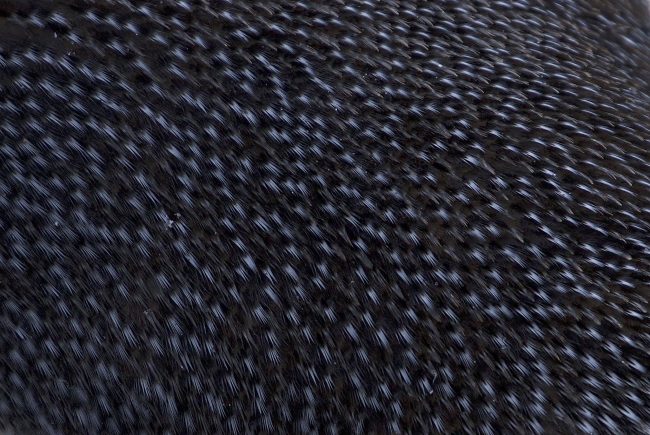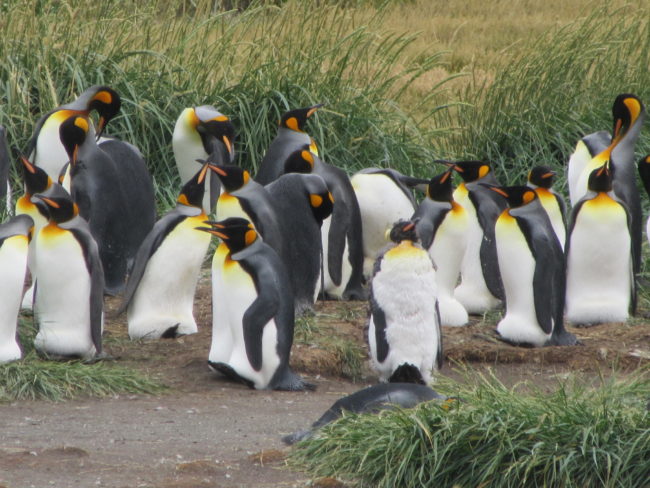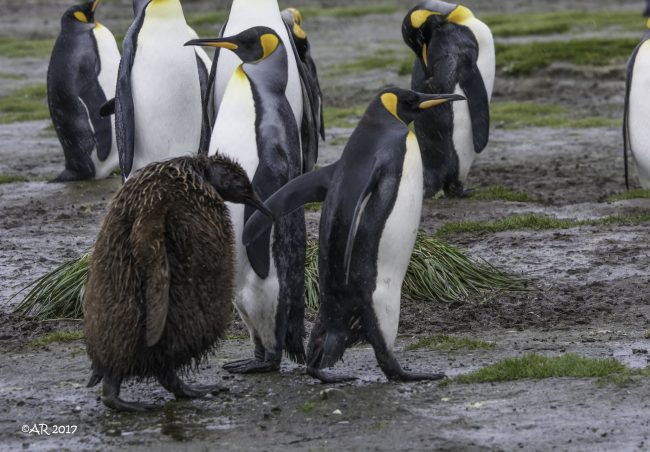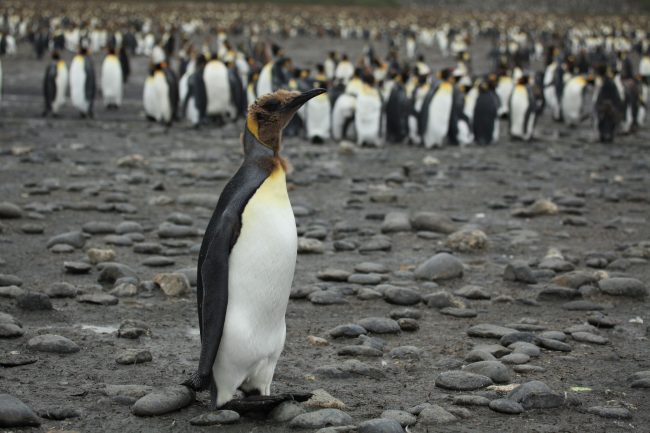Molting is a biological process by shedding the old feathers, skin, hair, nails, and making way for new growth. Every animal and bird undergo molting, even humans. Especially, penguins experience rapid shedding of feathers, which acquire the whole body within a few weeks. Penguins molt at least once a year, some of them molt twice or thrice a year.

What is Penguin molting?
Penguins have uniformly arranged, overlapped, thick layered, shiny feathers that cover the complete body by providing insulation. Penguins have more feathers compared to other birds. So their molting period is also different from other birds. Penguins molting is known as ‘catastrophic molt,’ which means causing sudden significant damage to the normal process. Because other birds molt few feathers at a time, but penguins replace the whole body with new feathers.
Image: Molting Emperor Penguin
Molting is necessary for penguins to get a thick winter coat to survive in the winter. Adult penguins undergo molting every year after the breeding season. When the molting period begins, penguins start to lose their insulating and waterproof feathers. So until completion of the molting process, they live away from the water.
Feathers of penguins worn sometimes like when they rub on another body while preening, and when they swim or on the land. The new feathers grown under the old feathers. Until the complete growth of new feathers, the old feathers don’t shed from the body. During molting, penguins look unhealthy, due to this loss of feathers.
How long do penguins molt?
Molting period depends upon the species of penguins; emperor penguins have the most extended molting period around 34 days. Some other species complete their molting period within two-three weeks.

Molting process has three stages.
1. Before the beginning of molting in the first stage, i.e., pre-molting period penguins consume more food at a rate of double or triple the regular diet. Their body gains weight with 30%; this because they have to stay without food for the whole molting period.
2. In stage two, penguins don’t go for the ocean, since their old feathers are getting lost, and new feathers are growing under the surface of the skin. So they have to fast until new feathers arrive entirely. During stage two, the food they intake during premolt helps them to stay alive and provides energy.
3. In stage three, they cover their whole body with new feathers. At the end of the molting penguins, get warm watertight coats. They reduce almost half of their body weight. So they head towards the ocean to refill the food that they lost during molting.
Benefits of molting for penguins
Although molting is a difficult task for penguins, like losing their feathers, staying without food for long days, etc. They have more benefits from that process.
- New feathers that grown during molting helps the penguins to stay warm with heavy winter on land and underwater.
- During incubation of the eggs, the skin folded feathers play a vital role in protecting the eggs.
- Even in the period of raising a chick, feathers give support. Adult penguin keeps the baby in their brood pouch and covers them with skin folded feathers.
Waterproof, and windproof feathers get harm by saltwater and as well as by sun, so feathers have to replace with new to be healthy.
Chick molting
Adult penguins undergo molting every year once or twice after the breeding season. Then how about the chick that is turning to get teenage. How will be their first molting process? Let’s see.
When a chick comes out of the egg, male penguins take responsibility for caring for the baby until the female returns from the hunt. Parents penguins exchange the young one from one another, i.e., if the mother carries the chick, the father goes for hunting and vice versa. Until the baby gets an age of self-stability, this process continues. After getting the age of maturity, parents leave the chick alone in the colony.

Every single baby penguin undergoes molting. Until the completion of the molting of baby penguins, the parent has to feed. New feathers replace the whole body of the chick with baby feathers. Baby feathers are in brown color. They get a scruffy look during this process, which makes to look unhealthy. When the babe becomes young molted penguin, they too head towards the ocean for hunting with their parents.

Conclusion
Penguins have more feathers, i.e., almost 100 feathers per square inch. Penguin is not only the birds that undergo molting, every animal, and birds, including human preen of their outer layers of the body every year like removing nails, feathers, skin, etc. The molting process is most needy for penguins to survive in the extreme cold conditions.
Reference:
Moulting season at Stony Point
http://penguins.neaq.org/2010/07/whats-happening-molting.html
https://seaworld.org/animals/all-about/penguins/physical-characteristics/
Thank you for the information on molting. I just learned of it being a penguin process a couple days ago. They are fascinating to watch on live cams on different pages.